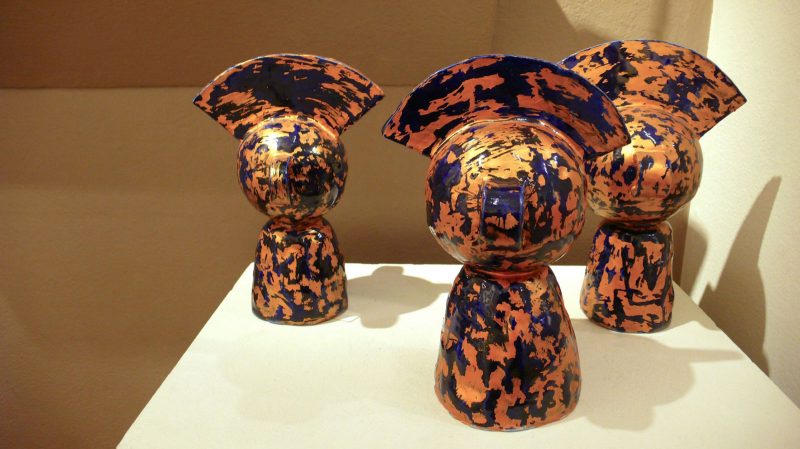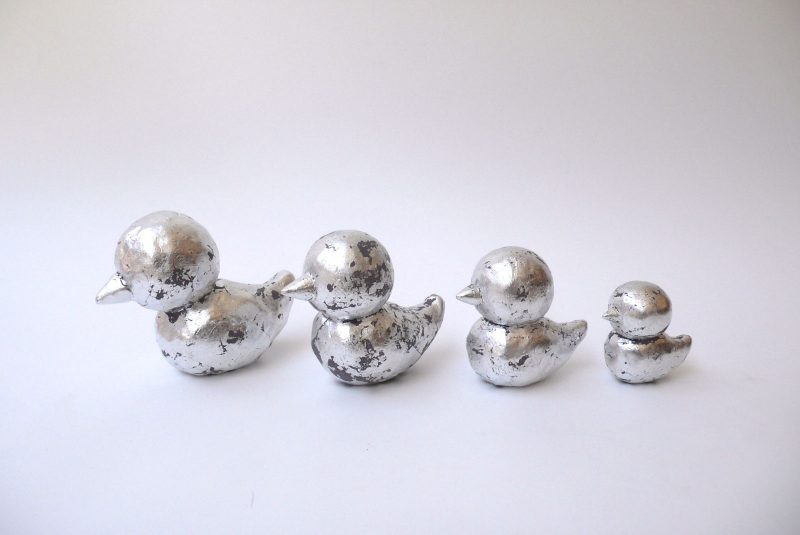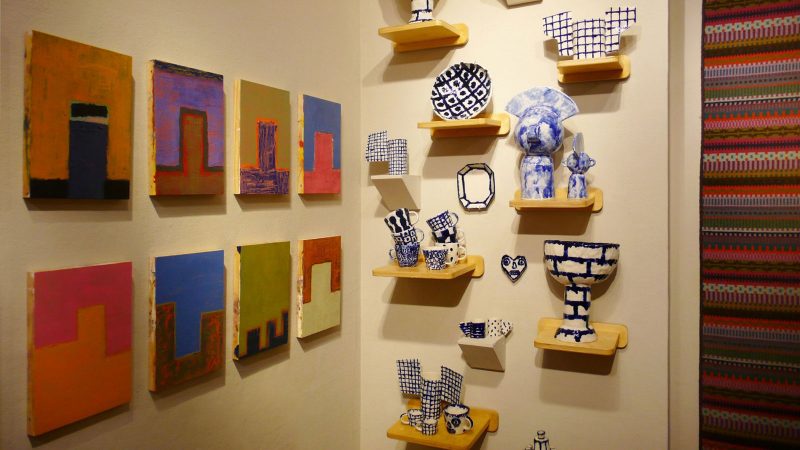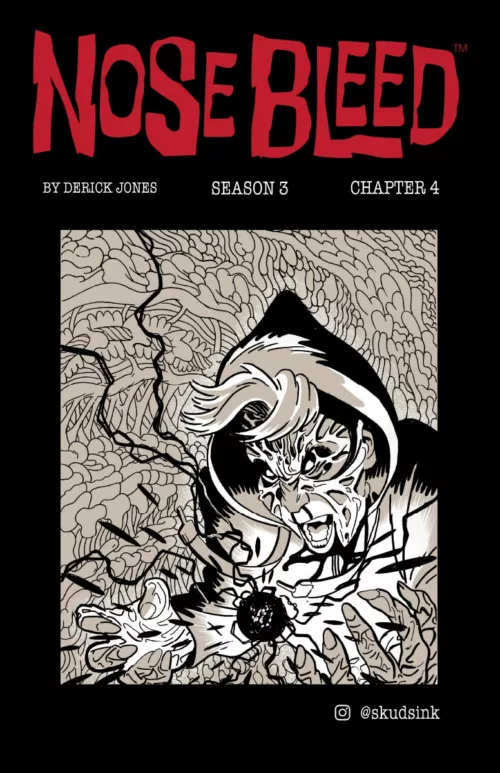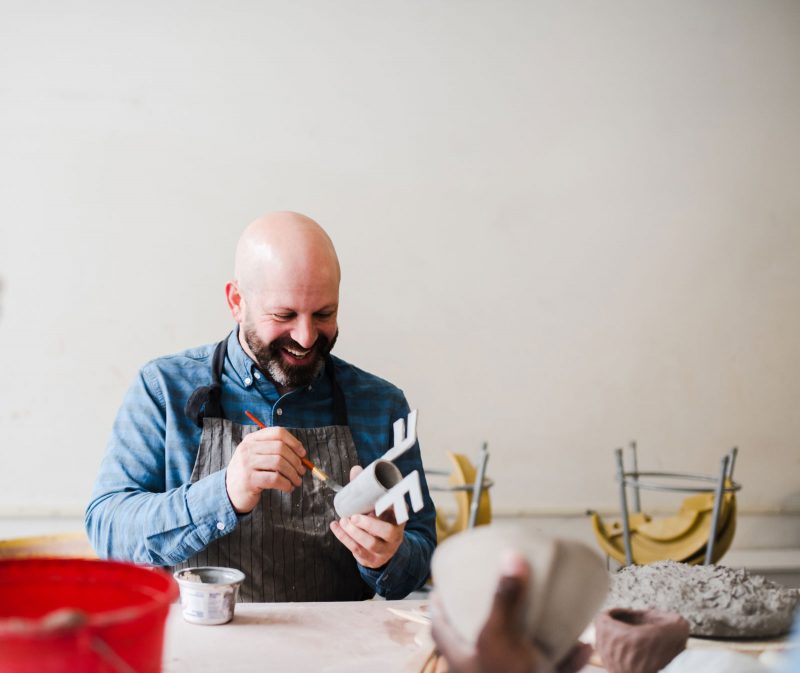
This spring, before leaving for his sojourn at Hankyu department store in Osaka, Japan, where he is in residency, Alex Stadler cultivated and set abloom Tell Me Something Good, a petite but compelling exhibition of ceramics, paintings and textiles at the Clay Studio in Philadelphia’s Old City. In person, Stadler is compact and solid; his characteristic expression is one of thoughtful and focused calm and inquisitiveness leavened with ever-percolating flashes of gimlet-eyed impishness.
Stadler is big in Japan. Like the mythic Persephone with a decidedly 21st-century international twist, but without the tragedy, and Stadler emerges from his Philadelphia home-base at winter’s end to bring springtime grace to Osaka. During annual in-store residencies there, Stadler customizes bags and clothing with his signature cartoon-like drawings inspired—in the moment and on the spot—by his interactions with the returning fans and intrigued newcomers seeking illumination through Stadler’s illustration.
The same can be said of his art and of the humans and animals (dogs, mostly) it often depicts, standing frontally with low centers of gravity, weight planted firmly on two (or four) parallel feet. Their faces are innocent, vulnerable, knowing, and somewhat sardonic all at once. Stadler writes: “For 40 years I have been trying to make objects that are elegant and also funny. So in that way, it’s about life every day, messy and falling short, with occasional moments of sweetness and beauty….” Stadler is showing and telling us something good.

Fittingly and fortuitously, Tell Me Something Good is a successful response to a compact yet solid space: the Clay Studio’s small but mighty Jill Bonovitz Exhibition Space, an alcove between the Studio’s two larger gallery spaces, which measures just 6.5 feet wide and 7.5 feet deep. This domestic scale is a good fit for small ceramics—a medium for both art-for-art’s-sake and artfully utilitarian objects such as plates, bowls, cups, and vases. Tell Me Something Good makes clear that a gem-like space is an excellent fit for Stadler, as well, whose stadler-Kahn boutique on Sansom Street (now closed) also made excellent use of a small space.
stadler-Kahn was as much a salon, retreat, and wunderkammer**, as it was housewares, gift, and clothing store and art gallery. It presented the fruits of Stadler’s multifaceted creativity—everything from knit scarves and socks to paintings and books he wrote and illustrated such as What Willie Wore (Chronicle Books, 2003), a tour-de-force of line and imagination that paid passionate homage to fashion and to Wilhelmina, a beloved rescued Jack Russell Terrier. Also in the shop were vintage finds on shelves, a wall for installations by fellow artists, and tables set with a select range of goods by fellow designers.
Experiencing the exhibition is not wholly unlike visiting the shopping-stall or studio-apartment of an individual with highly discriminating taste and a rigorous ability to select—or, in this case, create—per their singular vision. Even more than stadler-Kahn, Tell Me hearkens to the Enlightenment Age phenomenon of the wunderkammer.
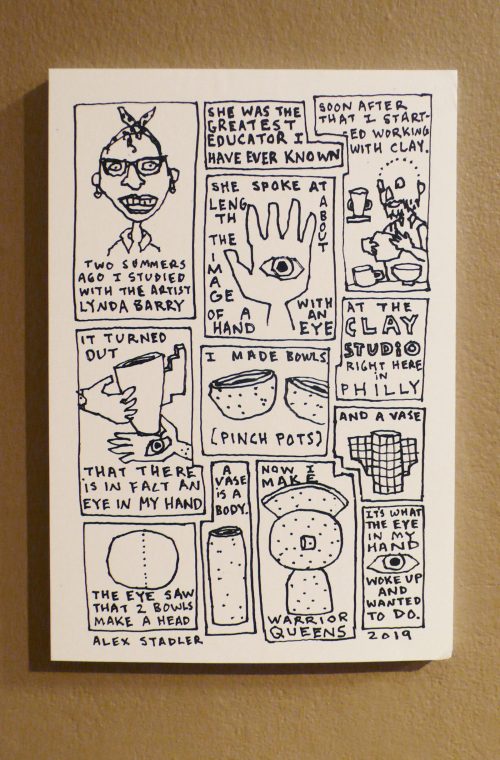
Stadler has been making ceramics for just two years and, counterintuitively, came to them after attending a course at the Omega Institute in Rhinebeck, New York, led by the celebrated cartoonist and author Lynda Barry. Barry burst into public consciousness and revolutionized the comic-strip form with Ernie Pook’s Comeek (1979–2008). Stadler’s extensive work in serialized illustration appears in Tell Me in an ingenious cartoon-as-artist-statement. In it, Stadler declares Barry “the greatest educator I have ever known” who “spoke at length about the image of a hand with an eye.” “Soon after I started working with clay,” Stadler’s strip continues, “It’s what the eye in my hand woke up and wanted to do.”
Building his ceramics in white porcelain glazed with cobalt-blue decoration, Stadler revisits and reinvigorates a color combination beloved for centuries in the East, West—nearly everywhere. By adding flat, wing-like appendages to columnar vases, he conjures the Winged Victory of Samothrace created in Greece around 200 BCE. In “Warrior Queens,” Stadler saw a head after joining two bowls to form a ball; handles become ears and a straight, flat projecting arc of porcelain on top read as a fierce mohawk from one angle and a dramatic headpiece from the other. The piece suggests pre-modern objects while addressing contemporary concerns with sexual orientation and gender identity.
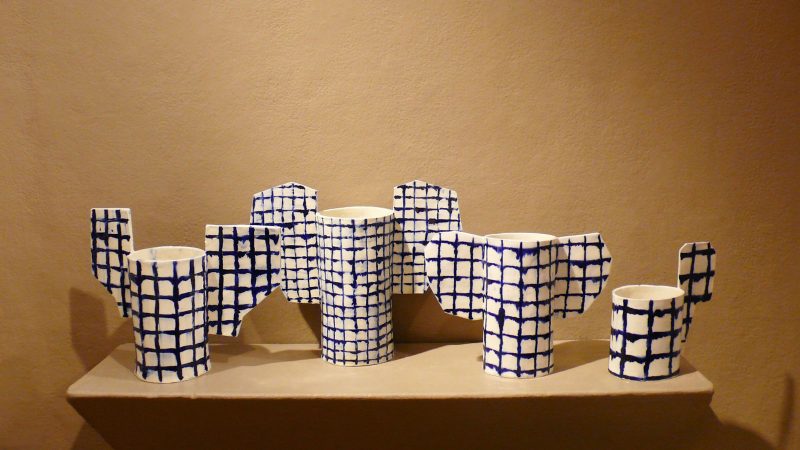
Among all the works, the figures starring in this show are porcelain water birds of pure—and purely adorable—form in porcelain with aluminum leaf.
Flat surfaces adorned with simple but strong shapes make Stadler’s both homey and heightened work spark associations with the ornate domestic designs of Vienna’s Secessionists circa 1900 and the brightly-colored, playful designs of Italy’s Memphis movement of the 1980s. Unlike those precedents, however, Stadler’s creations are infused with (eye-in)-handmade warmth, thanks to his signature straggly line and embrace of what’s human and, thus, imperfect.
Alex Stadler, “Tell Me Something Good,” Clay Studio, 137-139 N. Second St., from April 5-28, 2019.
** wunderkammer – a room in which a person of means installed their collections of exotic natural specimens, rare objects from ancient and foreign cultures, art, and more. The modern concepts of “museum” and “exhibition” evolved from the wunderkammer. Originally a German word, wunderkammer also translates to “cabinet of curiosities.”
More Photos
